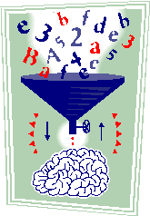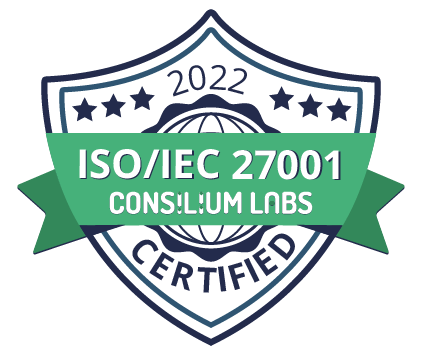There's not as much difference as we might think between subjective vs objective assessments. That's because all important decisions are really subjective? This means that you are wise to consider subjective factors, and resist calls to rely only on "objective facts" when you make important decisions. Here's why.
Rational decision makers consider multiple objectives
Strong decision makers rarely choose an alternative based upon a single factor or criterion. Taking the 'best’ course of action for important decisions entails, with very few exceptions, evaluating multiple objectives. The best decision makers always consider more than one objective for important decisions --even when those objectives may compete with each other. In fact, if you encounter a decision-maker situation where a decision is being based only on one factor, BEWARE! A review of the situation will almost certainly uncover other objectives that should be considered.
Prioritizing multiple objectives is a really a subjective task
Objective vs. subjective debates are traps to be avoided
The choice of the ’best’ course of action almost always involves trade-offs among multiple objectives. And, even when factors can be 'objectively measured' the relative importance of the objectives remains subjective. Therefore, all important decisions are subjective. Let's consider an example.
Example: Time or Money - What's More Important?

Consider a simple, but very real world example we encounter almost every day and in almost every complex decision. Time and money (along with more elaborate manifestations of time and money) are objectives in almost every important decision. And, compared to many objectives, time and money are easily measured in quantifiable 'objective' methods. But, easily measured does not mean they are merely objective factors! Even though we can measure time and money in discrete, measurable increments, they still have considerable subjective value in many important decisions. Why? Because their relative value is different, depending on the scenario, or the group of people making the decision.
Time and Money - Objective data measures that still have subjective data value
First, let's consider the relative value of time versus money on a personal level. A young, poor person is very likely to judge money to be more important than time. On the other hand, for an older, wealthy person, time is likely to be more important than money. Who is "right?"
Of course, they are both right! The relative importance of time and money is dependent on the person (subject) making the decision. There is no objective data, or ’formula’ that can ascertain the relative importance of these two objectives. It depends on the subject (the peson or group of people making the decision).
Multiple Objective Methods - Tools to Handle Subjective Data
Just because there there is no pre-determined 'formula’ to ascertain the relative importance of time versus money - thereare objective and rational processes that can accomodate subjective input, and convert it into numerical based priorities - in a manner that allows synthesis with othe objective inputs, and permits sensitivity analysis across both objective and subjective rankings of importance. Below is a list of multi-criteria decision methods that have been used over the years to help drive measures of relative value.
Many Different Multi-Criteria Decision Methods
- Aggregated Indices Randomization Method (AIRM)
- Analytic hierarchy process (AHP)
- Analytic network process (ANP)
- Data envelopment analysis
- Decision EXpert (DEX)
- Dominance-based rough set approach (DRSA)
- ELECTRE (Outranking)
- The evidential reasoning approach (ER)
- Goal programming
- Grey relational analysis (GRA)
- Inner product of vectors (IPV)
- Measuring Attractiveness by a categorical Based Evaluation Technique(MACBETH)
- Disaggregation – Aggregation Approaches (UTA*, UTAII, UTADIS)
- Multi-Attribute Global Inference of Quality (MAGIQ)
- Multi-attribute utility theory (MAUT)
- Multi-attribute value theory (MAVT)
- New Approach to Appraisal (NATA)
- Nonstructural Fuzzy Decision Support System (NSFDSS)
- Potentially all pairwise rankings of all possible alternatives (PAPRIKA)
- PROMETHEE (Outranking)
- Superiority and inferiority ranking method (SIR method)
- Technique for the Order of Prioritization by Similarity to Ideal Solution (TOPSIS)
- Value analysis (VA)
- Value engineering (VE)
- The VIKOR method.[24]
- Fuzzy VIKOR.[25][26]
- Weighted product model (WPM)
- Weighted sum model (WSM)
AHP Software - The best method for valuing multiple objectives, particularly for group decisions
The best of these "management science" methods is called AHP (T he Analytic Hierarchy Process).
he Analytic Hierarchy Process).
AHP differs in a significant way from many other management science methods--many of which focus only on a single 'objective’ function. And, as we've just discussed, taking the 'best’ course of action for important decisions entails, with very few exceptions multiple objectives.
Further, many of these other multiple objective approaches typically ask people to 'assign' weights to objectives. AHP is unique in its ability to 'derive priorities' by eliciting pairwise comparisons and processing them using an 'eigenvector' computation (similar to the computations used by Google). These derived priorities have been shown to be more accurate than assigned weights in terms of reflecting the real relative importance of objectives to individual decision makers, or groups of decision makers.
The advent of computer technology and social group meeting capabilities has resulted in the availability of several strong AHP software products in today's marketplace.
AHP Software: Must-Have Features

Today's best AHP software packages offer a strong combination of decision structuring, evaluation, and group collaboration tools. Here's a list of features you should you expect from a strong AHP tool.
- Ability to organize objectives into clusters of homogenous (similar) importance
- Ability to use of paired comparisons to derive ratio scale priorities
- Ideal and distributive synthesis modes
- Ratings, utility curves and step functions
- Dynamic, gradient, and performance sensitivity analysis
- Tools to help align alternatives with objectives
- Ability to define participant roles and responsibilities
- Ability to segment results at participant and group levels
- Group input capability -- that can handle both asynchronous (anytime) and synchronous (simultaneous/real-time) inputs
- Ability to export/import data
- Ability to create an optimum combination of alternatives
- Reporting
- Transparency
Want to Learn More about AHP Software?
Expert Choice has been the leader in AHP Software
for the past 30 years!













